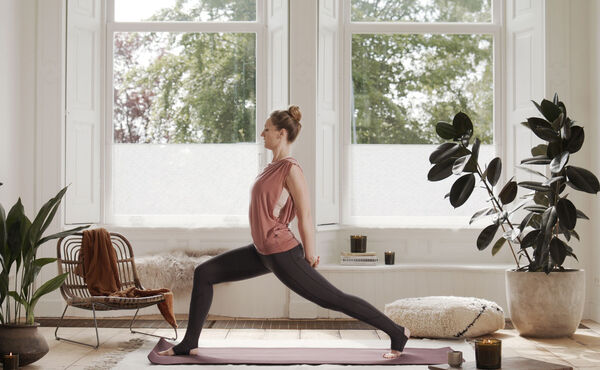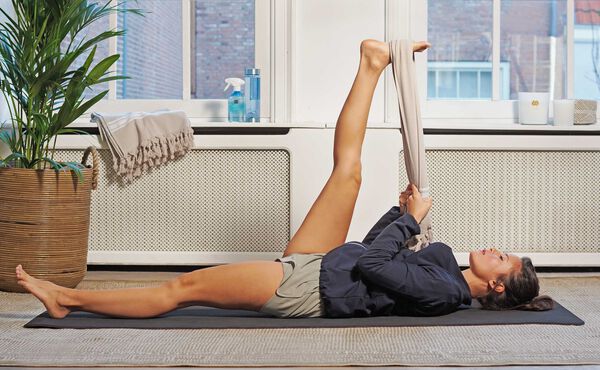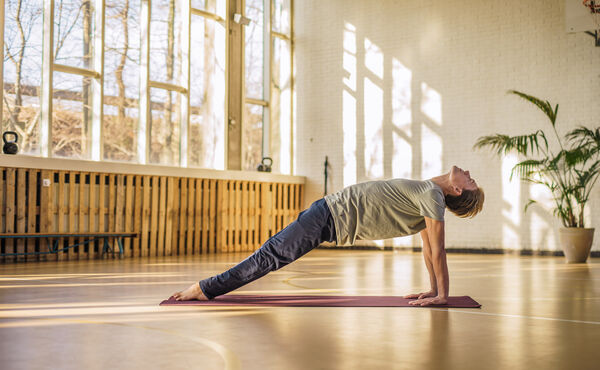Breathe in. Breathe out. Every day, you inhale and exhale an average of 17,820 times, but you rarely notice the hard work your lungs do to keep this process going. The lungs are the body’s unsung heroes, quietly working beyond the scenes to keep you healthy, active and on the go. Treated correctly, these vital organs can keep you moving until well after retirement age. Let’s give them a little love.
HOW THEY WORK
Breathing’s simple, right? Oxygen in, carbon dioxide out. But actually getting those atoms to circulate around your body takes a little more work. When you inhale, the muscles around your lungs contract and move downward, causing your lungs to expand. Air rushes in through your nose or mouth, down your windpipe and into passages called bronchial tubes. As these tubes divide into each lung, they branch off into tinier and tinier passages, ending in microscopic little air sacs called alveoli.
These alveoli are surrounded by a network of tiny blood vessels called capillaries, which bring carbon dioxide in from the rest of your body and exchange it for fresh oxygen. The oxygen goes into your bloodstream, nourishing your heart and other organs and tissues, while the carbon dioxide leaves your body when you exhale. All these processes go on every time you breathe in or out.
If that sounds complicated, click here for a video that breaks down this vital process.
COUNT ON YOUR BREATHS
One of the simplest things you can do to support your lungs’ health is to make sure your breaths are as long as possible. An easy way to do this is to count while you’re inhaling and exhale. If your breath in takes a count of 4, try to make your breath out is the same length. Once you’re able to do that, try adding a count and consciously extend the time it take to breathe in and out.
STRENGTHEN YOUR DIAPHRAGM
Free divers and opera singers share a secret: exquisite control over their diaphragms. This funkily-named muscle is the powerhouse behind your breath, sitting underneath your lungs and working to help them expand or contract.
Finding – and engaging – yours is simple. Sit or lie comfortably, with relaxed shoulders. Place a hand on your chest and one on your stomach. Breath in slowly through your nose, feeling your abdomen expand. Purse your lips and breathe out, contracting your stomach. Repeat these steps.
Extra credit: with your hand on your stomach, try contracting it sharply and rhymically, feeling the air pulse out of you. Try doing ten reps daily to build up your muscle control.
GET A MOVE ON
A simple way to improve your lung capacity is by adding some aerobic exercise into your workout routine. “Aerobic” means “with oxygen”, but in short it can be anything that gets your blood pumping and heart racing. Find ways to add in some cardio, whether it’s going for a gentle run or trying out an at-home routine.
THE SCENT OF HEALTH
Plants such as eucalyptus and rosemary have been used for centuries to promote healthy breathing. Find small ways to add these fragrances to your daily routine, whether it’s by adding a bunch of eucalyptus leaves to your flower arrangements, lighting up a scented candle, or tipping a rich bath oil into a steaming bath. Breathe in and luxuriate in the purifying aroma.
A HEALING TONIC
Sometimes, the secret to healthy lungs can be as close as your kitchen cupboard. Nutritional therapist and master herbalist Carolina Brooks suggests taking teaspoon of vinegar tonic daily to ward off viruses.
To make the tonic, combine garlic, horseradish, ginger, onion, chilli and lemon peel in a large jar with a clip-top lid. Add in rosemary, oregano, clove, cinammon, ginger and star anise. Cover the roots, herbs and spices with twice as much apple cider vinegar. Keep covered. Shake then tonic twice a day for 2-4 weeks, then strain it and drink 1 tablespoon a day.
SIT UP STRAIGHT
Your mum was right – posture is everything. Slumping and slouching can compress your lungs, leading to shallower breaths. Make an effort to keep your body upright and shoulders back, and try limbering up in the mornings with a yoga routine.



.jpg?sw=600&sh=370&sm=fit&cx=240&cy=160&cw=1782&ch=1099&sfrm=jpg)




